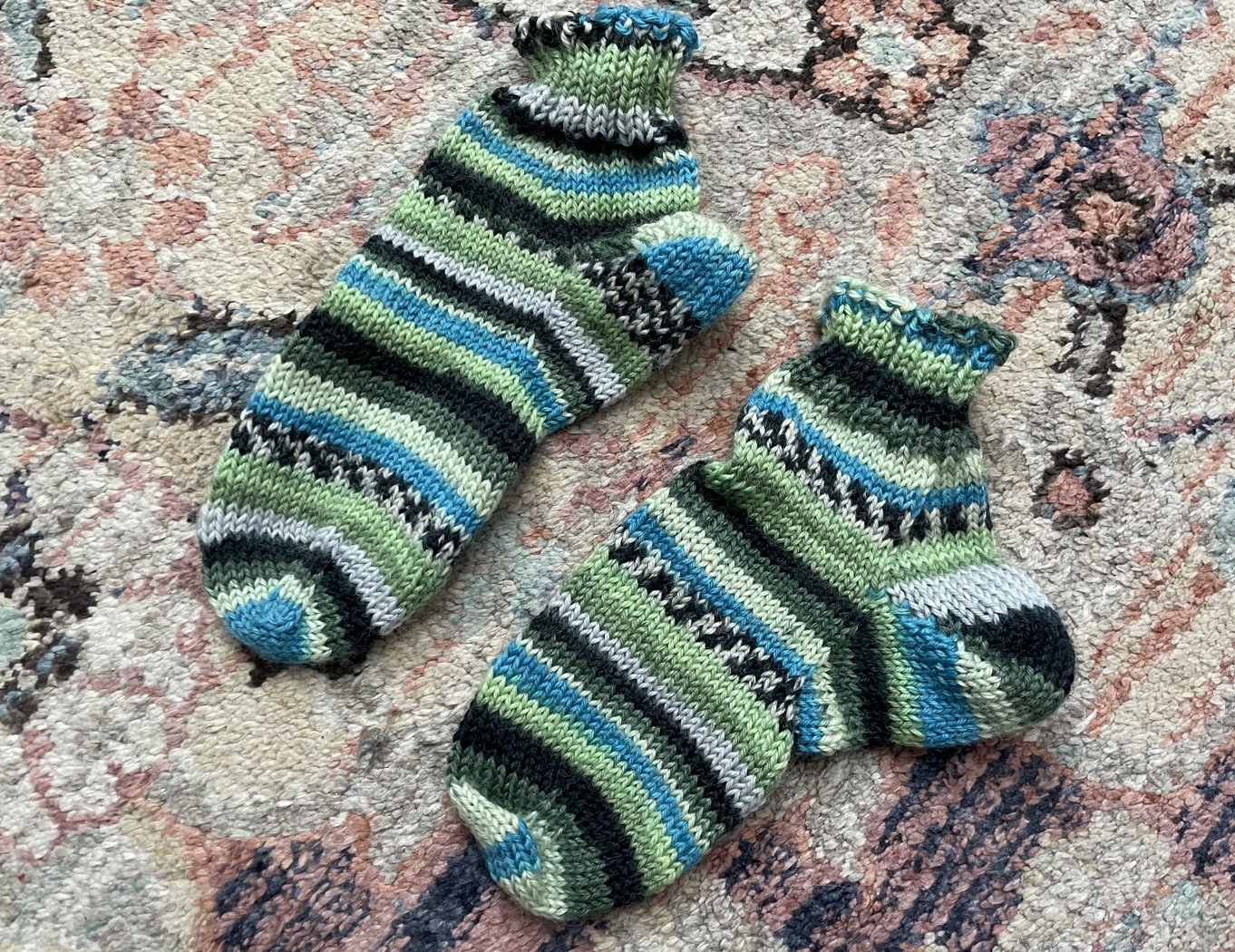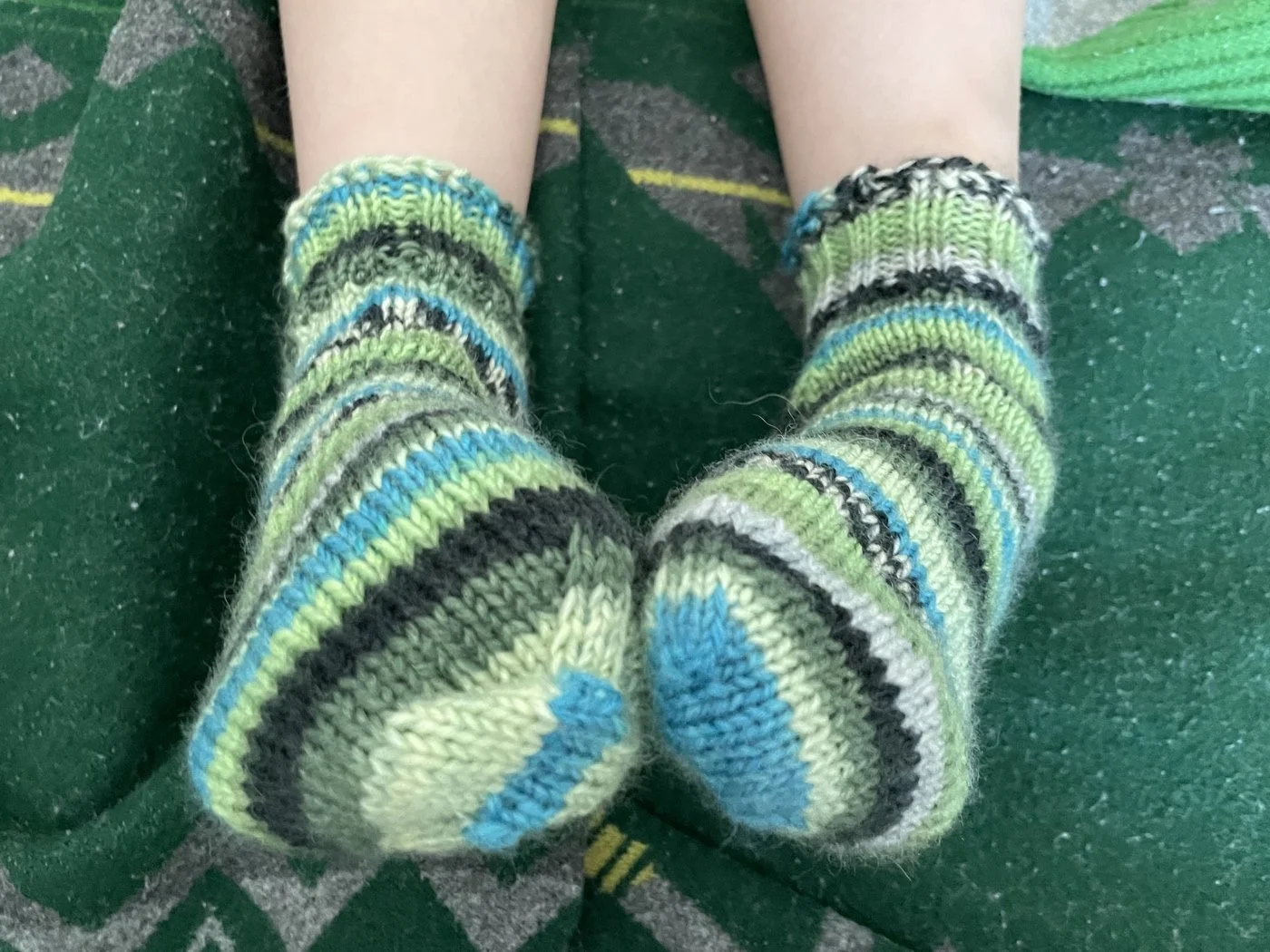Too Pointy - Musings and Experiments with Short Row Heels
/At the time I’m writing this sentence, I’ve knit a total of three short row heels. Not a big sample size, I know, but I have a few thoughts. There are some definite pros to a short row heel:
A short row heel takes way less time to knit than a gusset and heel flap.
A short row heel, even with a mini-ish gusset, requires way less yarn than a gusset and heel flap.
The pattern of self-striping yarns is not completely distorted because there are minimal (or no) increases.
I’ve also come across a few cons for the construction:
The method you choose for working the short row is incredibly important so you don’t end up with gaps at every turn.
Accommodating a higher instep can be frustrating since you’ll need to add a tiny or mini gusset. How many stitches should that gusset have? When do you start it? That’s no different than working a gusset and heel flap. For me, at least, I’ve knit so many heel flaps, that I can almost do that math in my sleep. For short row heels, I’m still figuring that out.
The shape of a standard short row heel (hourglass, yo-yo, whatever you like to call it) is too pointy at the fold where you’d start working longer rows again. Here’s an example to show you what I mean:
Looks like a totally reasonable short row heel. I’m using the shadow wrap method for this one. Now let’s look at it on a foot.
There’s all this extra fabric hanging around. Maybe I could solve this by working more short rows so that the very center of the heel is narrower. Instead of working until about 1/3 of the stitches is left unwrapped in the middle, I’d aim for about 1” of stitches and make the heel deeper. My math for toe-up gusset and heel flaps uses 1” of stitches to know where to end the heel shape. That number works for a gusset and heel flap, so maybe it’ll work for a short row heel too.
I didn’t want this pair of socks to linger because than kiddo might out grow them before I can finish. So I decided to solve this too pointy problem by recreating a style of short row heel I’ve seen on some commercial knit socks. Instead of just the two wedges you usually see, like the drawing on the top, I wanted to add a narrow band that sits between the first wedge and the second wedge. The drawing on the bottom shows what that would look like when complete. My hope was that this band would give the short row heel a rounded shape that would hug the heel.
It took a little bit of trial-and-error to get this added shape to work with a shadow wrap heel, but I finally got that little band in the middle! You can barely tell a difference when the sock is laid flat, but the fit is massively better. The heel is not too pointy and there are no little mouse ears poking out at the sides either. I am thrilled this worked. I have a few other ratios and shapes I’d like to try for this center band, but this is a good first step. I’m looking forward to working on this heel modification a bit more.
In the mean time, the kiddo gets to wear these awesome socks. There was a brief period of time where she decided she didn’t like them after they were finished. Ughh. But she’s come around and has actually picked them out to wear for the day without any prodding from me. I’ll call that a win.
The Specs:
Pattern: My in-progress vanilla short row heel sock
Yarn: Adriafil Knitcol - 67
Yardage: 129 yds
Needles: 2.75mm circulars
Dates: December 27, 2022 - January 11, 2023








